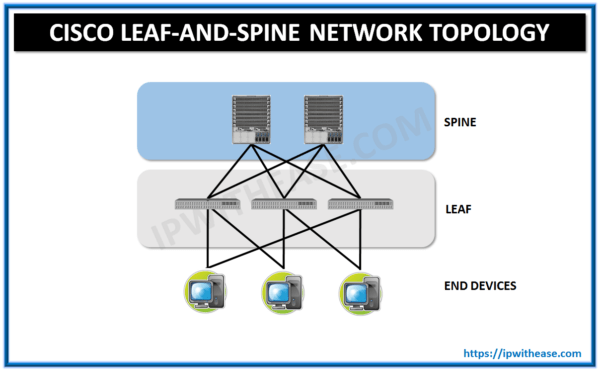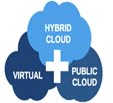What are Spine and Leaf?
Spine and Leaf is a two-layer network topology composed of leaf switches and spine switches.
We are all aware of the Cisco’s 3-tier network topology with the following 3 layers –
1)Access Layer
2)Aggregation/Distribution Layer
3)Core layer

The Access Layer connects to the end devices (e.g. clients and servers). The Aggregation/Distribution Layer redundantly interconnects Access Layer switches and provides redundant connections to the campus backbone (i.e. the Core Layer).
The Core Layer then provides very fast transport between Aggregation/Distribution Layer switches.
However, when we talk about leaf- and – spine network topology, it is a 2-tier network topology
The topology is composed of –
1) leaf switches (connected to the end devices e.g. clients and servers) representing the Access Layer, and
2) spine switches (to which leaf switches connect) replacing the Aggregation/Distribution layer and Core Layer.

Leaf switches mesh into the spine, forming the access layer that delivers network connection points for servers. Each leaf switch connects to every spine switch. As a result, there’s no need for interconnections between spine switches.
It is useful for a data centre that experience more east-west network traffic than north-south traffic and caters scalable oversubscription ratios.
Related – What is Cisco Express Forwarding?
ABOUT THE AUTHOR

I am here to share my knowledge and experience in the field of networking with the goal being – “The more you share, the more you learn.”
I am a biotechnologist by qualification and a Network Enthusiast by interest. I developed interest in networking being in the company of a passionate Network Professional, my husband.
I am a strong believer of the fact that “learning is a constant process of discovering yourself.”
– Rashmi Bhardwaj (Author/Editor)



